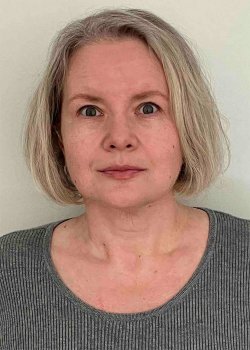
View Profile Page

Elena Petroff
Chairperson, Biology, College of Science and Mathematics
- Office:
- Science Hall 110
- Email:
- petroffe@montclair.edu
- Phone:
- 973-655-2027
- Degrees:
- BSc, Kiev University
- MSc, Kiev University
- PhD, University of York, UK
- vCard:
- Download vCard
Profile
As a neuroscientist, I am interested in how brain cells function and how this activity is regulated in physiological and pathophysiological conditions. Ion channel activity is fundamental in the regulation of cell function, from basic membrane transport to complex processes such as signaling, excitability, secretion and cell division. My previous work has identified a novel mechanism of interaction and mutual regulation by two classes of neuronal and glial ion channels, acid-sensing ion channels (ASICs) and potassium channels. Coordination of ion channel activity and ion channel interaction is an emerging field important for both understanding basic biology and for identifying new pharmacological targets.
Specialization
Molecular Neuroscience
Ion Channel Physiology
Resume/CV
Links
Montclair State University does not endorse the views or opinions expressed in a faculty member's webpage or website. Consistent with the principles of academic freedom, the content provided is that of the author and does not express the opinions or views of Montclair State University.
Research Projects
ASIC-K+ channel interaction in glia and gliomas.
Glioma brain tumors carry a very poor prognosis due to their fast growth and invasive migration. Both normal glia and glioma tissue express ASIC and BK channels. Interestingly, expression of ASIC channels changes with the progression of these types of tumors. BK channels potentiate cell proliferation, and their blockers are used to inhibit glioma cell growth. This NIH funded project studies how ASICs function as endogenous inhibitors of glial cell growth through inhibition of BK and how dysregulation of this interaction may lead to increased proliferation of glia and tumor growth.
ASIC toxin-like domain inhibition of BK and Kv channels.
To understand the blocking mechanism and to gain insights into which other physiological stimuli (for example, activity-dependent elevation of extracellular K+, intracellular Ca2+ dynamics, redox state) may affect ASIC-K+ channel interaction, electrophysiology and biochemical approaches are used. Kinetics of the interaction, voltage-dependence of the block, open and closed-channel block, effects of intracellular and extracellular cations, interaction with K+ ions within the channel pore, and pH-dependent unblock are studied at the whole cell and single channel level. Previously generated tools like ASIC mutants that do not block BK, as well as ASIC1a wild type and mutant peptides, are used in heterologous expression systems, neurons, and glia.